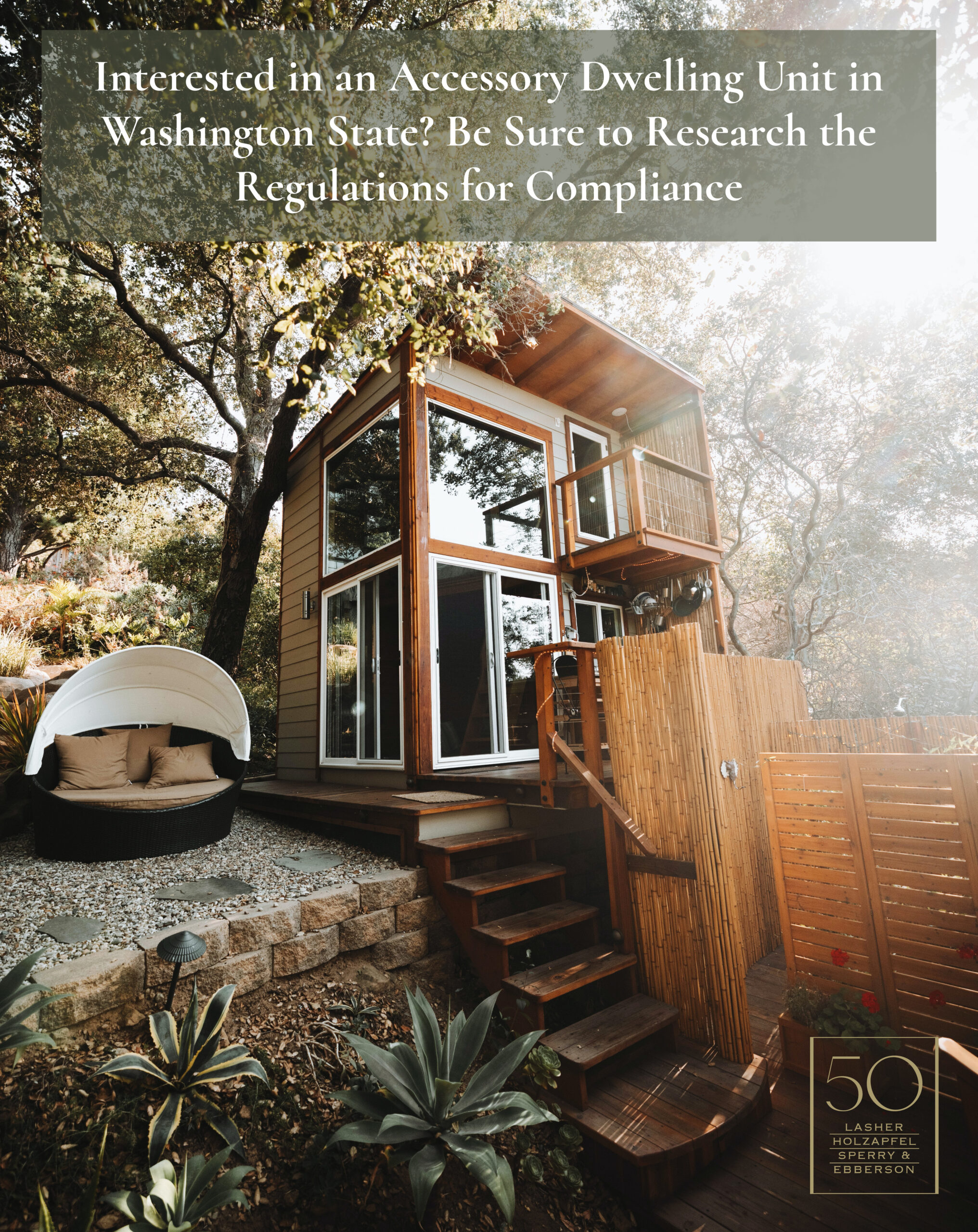Interested in an Accessory Dwelling Unit in Washington State? Be Sure to Research the Regulations for Compliance

Posted on November 6, 2023 by Kelly Rutledge
In recent years, the interest in Accessory Dwelling Units (ADUs) has grown exponentially in response to housing shortages and affordability issues. The regulatory landscape for ADUs is dynamic and can be affected by changes at local, state, and/or federal levels. It is crucial for property owners and builders to be informed about the latest requirements to ensure compliance.
ADUs in Washington state are generally subject to a combination of state and local regulations. State laws provide a baseline, while local jurisdictions have the authority to tailor regulations for specific needs. The regulations are generally intended to strike a balance between accommodating the need for housing while addressing concerns related to neighborhood character, infrastructure, and overall livability.
General regulations governing ADUs may be found under Chapter 36.70A RCW and WAC 51-51. The state level regulations establish fundamental standards for construction, safety, and habitability that ADUs must adhere to. In addition, HB 1337 (passed in 2023) requires jurisdictions to allow two (2) ADUs per lot within urban growth areas (UGAs). In addition to state level regulations, local jurisdictions such as cities and counties, often have separate zoning codes and regulations that address ADUs. These codes and regulations may include requirements related to size, setbacks, height, parking, and other aspects of ADU design and construction.
For example, King County allows for different types of ADUs including both attached and detached units. Attached ADUs are typically part of the main dwelling structure such as a basement or attic conversion, while detached ADUs are standalone structures and are sometimes referred to as backyard cottages. The flexibility in allowing both types aims to accommodate various homeowner needs and property configurations.
Within King County, each municipality has its own zoning codes and land use regulations. These local ordinances play a pivotal role in shaping how ADUs are permitted and constructed within specific areas. For example, the zoning codes of cities like Seattle and Bellevue may differ in terms of ADU size, setbacks, parking requirements, and permitted locations. Some municipalities have even undergone regulatory changes to encourage ADU development by relaxing certain restrictions such as easing parking requirements, reducing minimum lot sizes, or expediting permitting processes. These adjustments are intended to make it more feasible and attractive for homeowners to add ADUs to their properties.
As an example of such encouragement, on December 15, 2021, Mayor Durkan signed Ordinance 126509 which renamed “Single Family” zones as “Neighborhood Residential” zones. Seattle’s Office of Planning and Development (OPCD) also launched a web tool featuring pre-approved ADU designs, a step-by-step guide to the ADU process, and a search tool to identify the feasibility of adding an ADU to a residential property.
Staying informed about the specific ADU regulations in one’s locality is essential for homeowners, builders, and those interested in contributing to an area’s housing solutions. Despite the easing of regulations, many challenges remain such as concerns about the impact of ADUs on neighborhood character, infrastructure, and parking availability. Striking a balance between encouraging ADU development and concerns thereover will be an ongoing issue for all involved.
If you have legal questions about ADUs in Washington, the Real Estate practice group at Lasher is available to assist.

